Last Day—Parting Shots & Sounds
The last day on Hawaii started with a dawn rendezvous with birds, south of Hilo. The recordings at right are some of what was heard.
Below is the spectral display for the recording, frequency scale on the right. The bright area at the bottom is the nearby ocean sound—low frequencies. Just above, in the mottled area, is the critter (frog or bird, or whatever it was). The bright band at 5 kHz is an insect that was continuously chirping. Above that are fainter bands at 10 kHz and 15 kHz which are probably harmonics created by the insect.
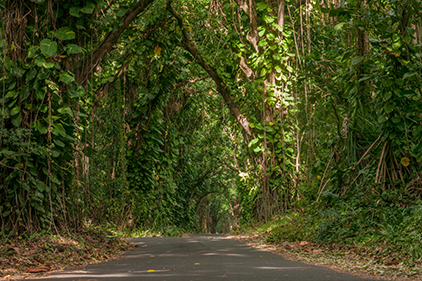
This recording features a couple critters. Is that a bird or a frog, chirping merrily? I don’t know…but unlike a bird it really never stopped.
This is a cleaner version, recorded nearby, of the same critter (frog or bird). No insect, and software was used to minimize the ocean sound.

Interesting about last days—one feels the clock ticking so fast, and there are so many things one wanted to do but there is no time for. In the summation of a “last day” audio-travelog post, I can reach back for a few things that didn’t get covered, above…like tree molds.
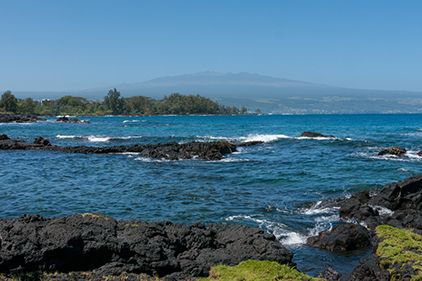
Mauna Kea is visible across Hilo Bay. Look closely and you can see several white specks around the summit. Those are the large telescope housings.
The fluid pahoehoe lava flows do interesting things when they encounter trees. The lava is hot, typically 1,100–1,200° Celsius (over 2,000° Fahrenheit). Wood starts off gassing at around 300°C (~600°F), and the gases start burning at around 540°C (1,000°F). The trees don’t stand a chance…but they don’t give up without resistance.
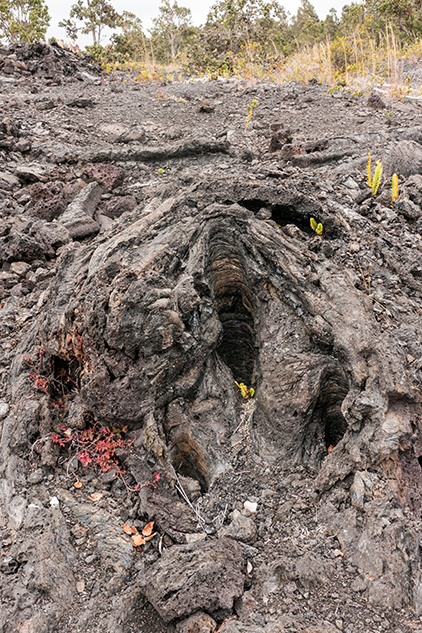
You can see the direction of lava flow, frozen into the rock around the hole that was the tree.
Tree molds happen when lava flows around the tree. The tree eventually burns away, but the lava has hardened, leaving a hole where the tree trunk was, with the tree bark embossing the inside of the hole.
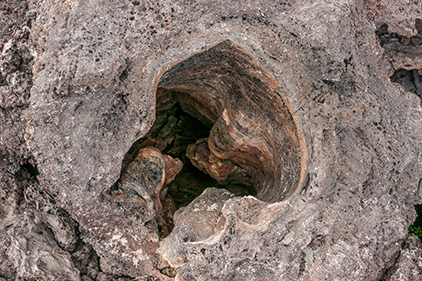
One can see the details of the shape of this tree trunk, when the lava consumed it.
Sometimes, the lava will flow around the tree, encasing and burning it, but the lava flow will subside and the lava level lower. The result is a standing column of lava—a standing tree mold. The top of the mold marks the high point of the lava. These are called lava trees.
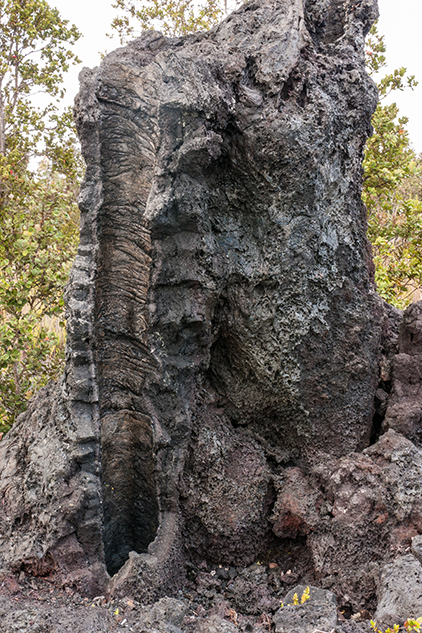
Called a lava tree, by some, you can see the mold where the tree trunk had been on the left of this lava column. The height of the lava tree indicates how high the lava flow got. Then the flow subsided and the lava level dropped, leaving this standing tree-mold column.
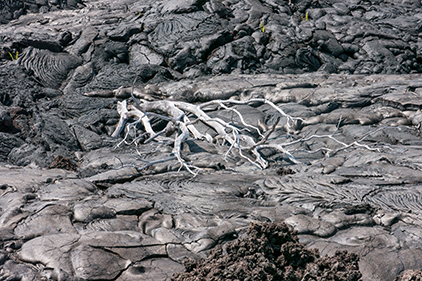
This tree burned through where the lava surrounded it, but when it fell, the flow had cooled enough that it didn’t burn the fallen tree.
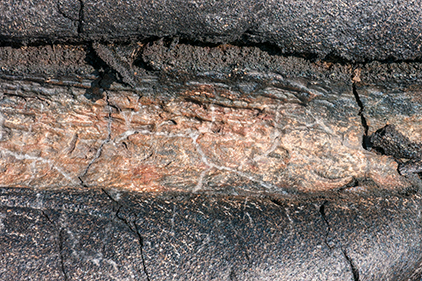
Nearby there is an impression of a fallen tree trunk in the lava.
Even though it was Spring, and the rainy season, it has been a dry rainy season. Not many flowers in Spring blooming. The hibiscus, of which there are seven Hawaiian native species, were blooming. But they may always be blooming. And the coelesced berries of the flower for that plant.
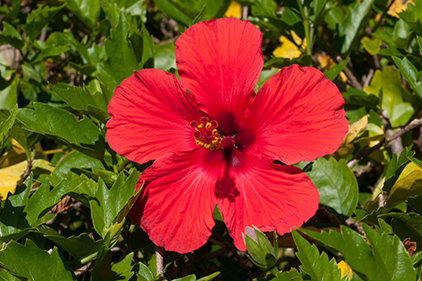
A hibiscus flower. This one may not be one of the seven native species.
This is a very long-winded northern cardinal.
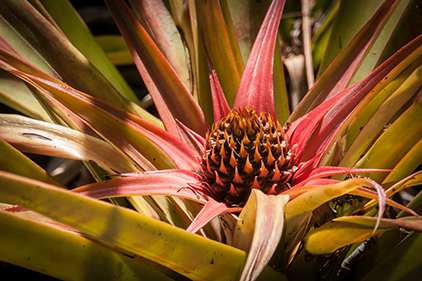
A growing pineapple, past the flower stage.
Following the damage caused in Hilo by the 1960 tsumani, building codes started to change. Many modern buildings near the shore are on sturdy stilts, the idea being that a tsunami would flow under the structure or even (by design) through the building (like the lobbies of most of the hotels on Banyan Drive).
A house on stilts—tsunami construction.
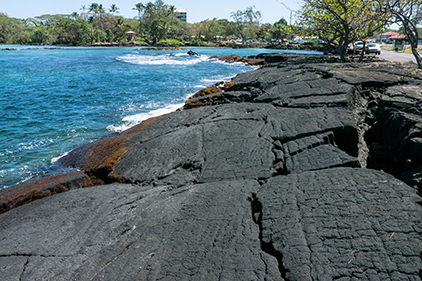
A slab of pahoehoe makes up this “beach.”

An amazing construct. Balanced stones on a windy beach.
My parting shot was unexpected. At one of the beach parks south of Hilo, one could see whales spashing in the distance. By luck and persistance (camera on a tripod taking burst after burst of photos), I was able to capture a pretty neat photo of a breaching whale with just a modest telephoto lens.
Thanks for reading. Thanks for listening.
Aloha

A breaching whale south of Hilo. This one will be in Alaska in a few months.